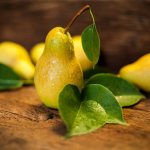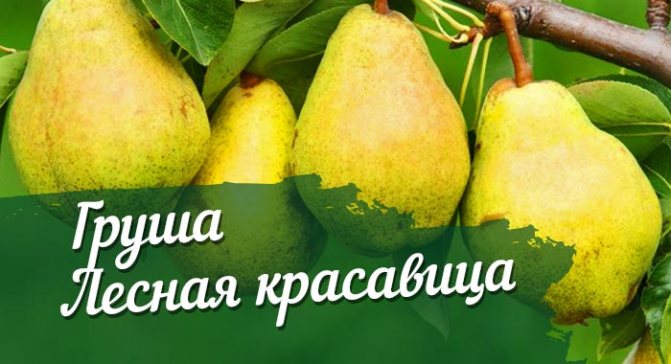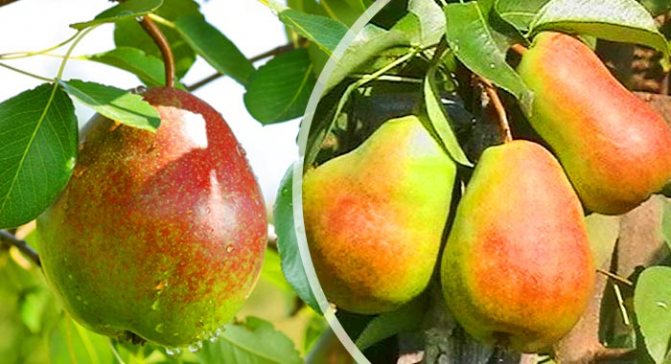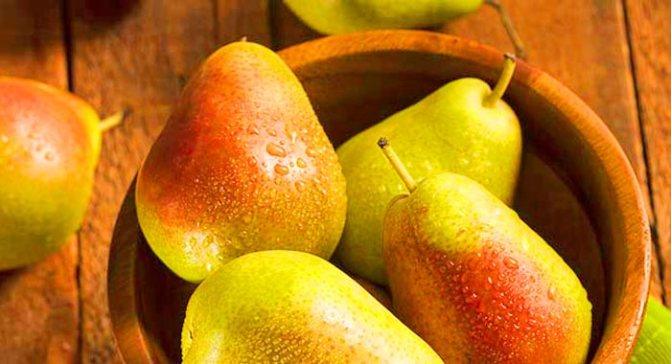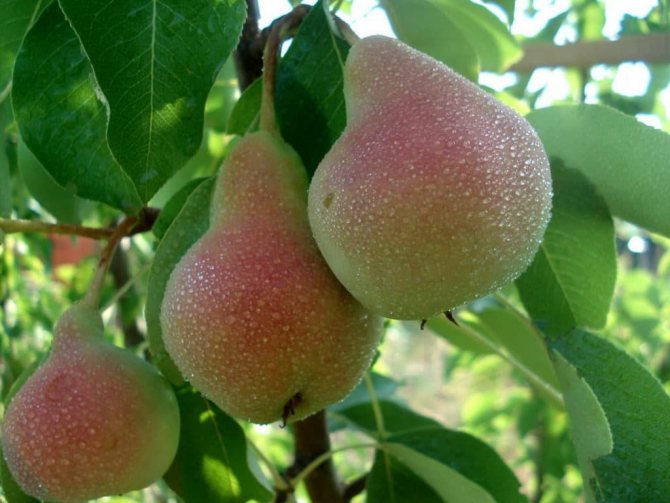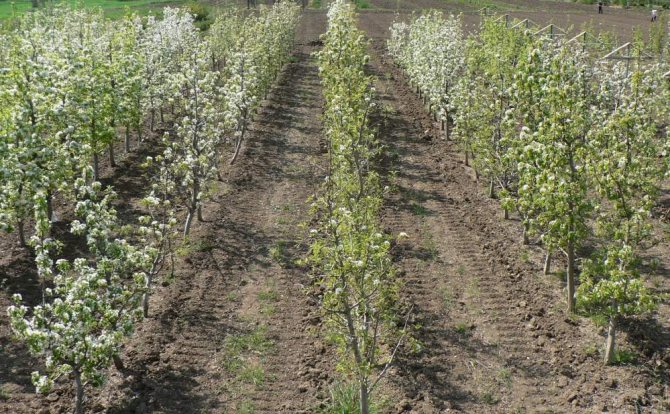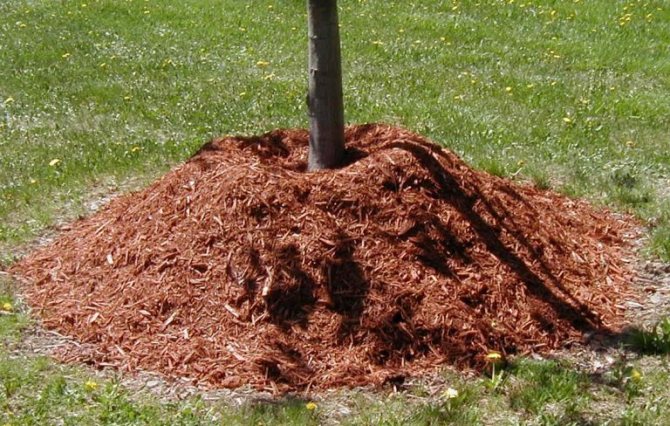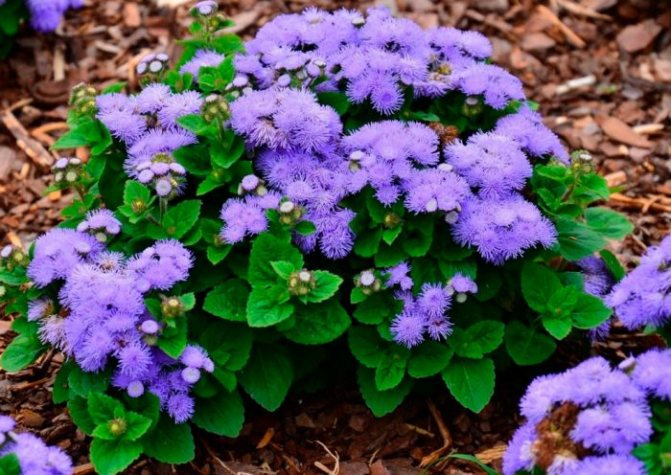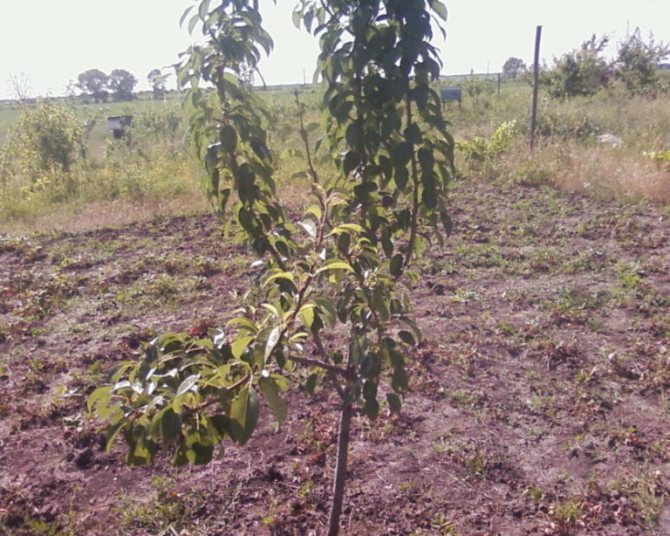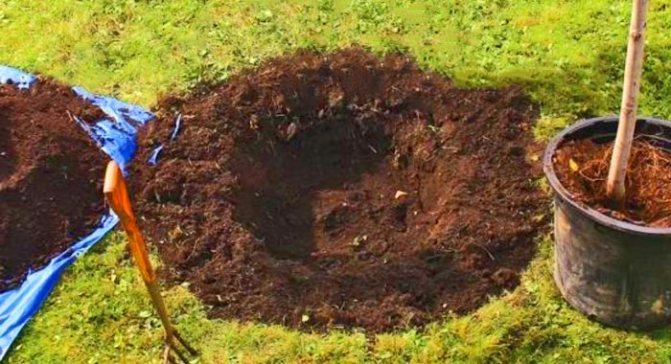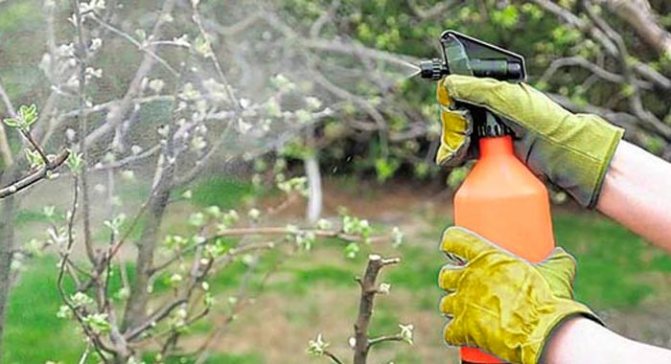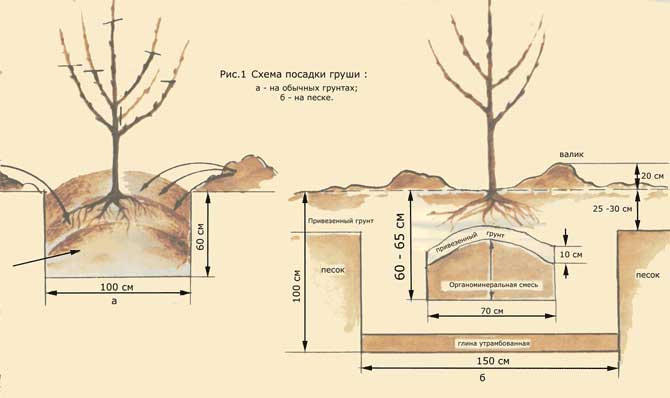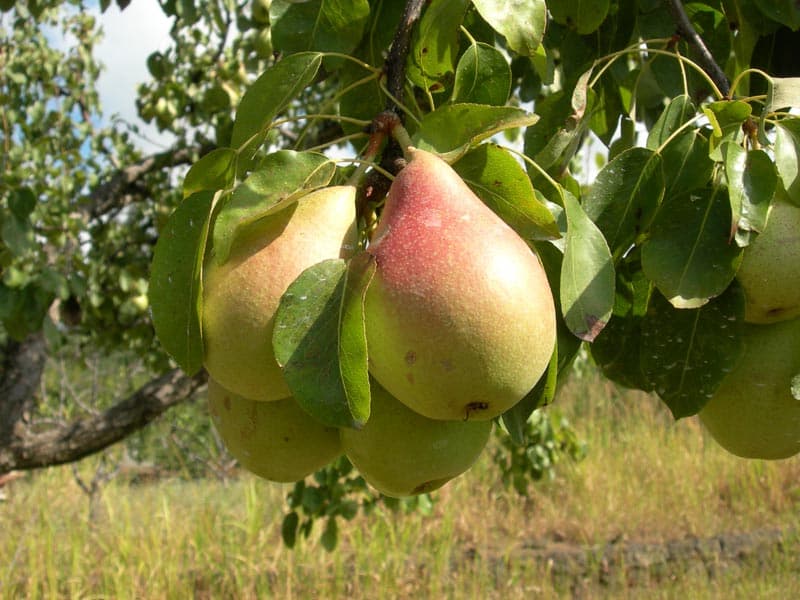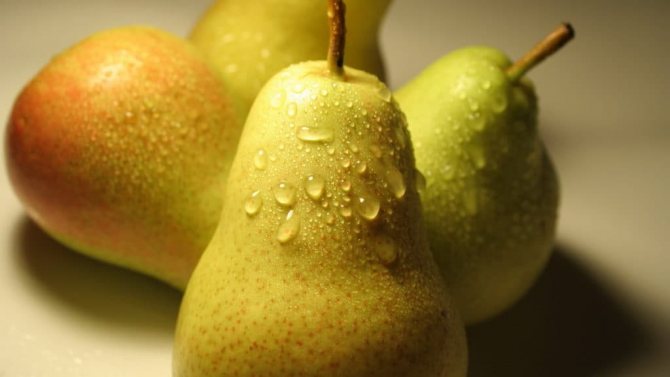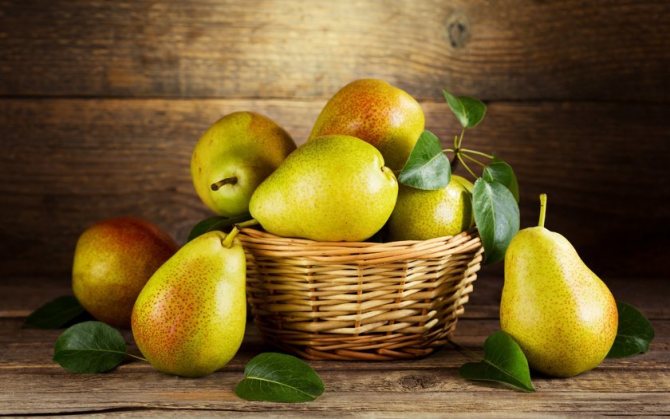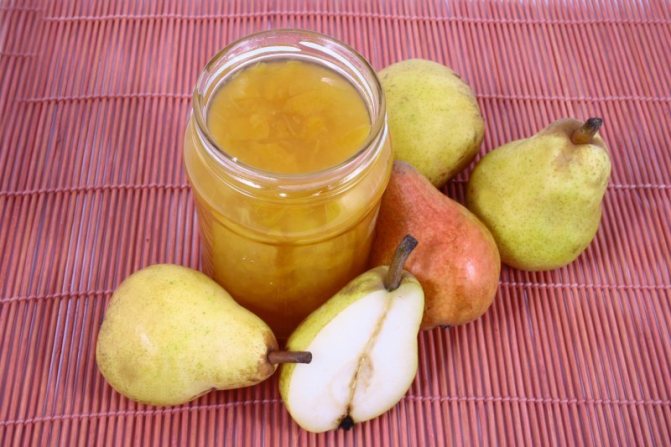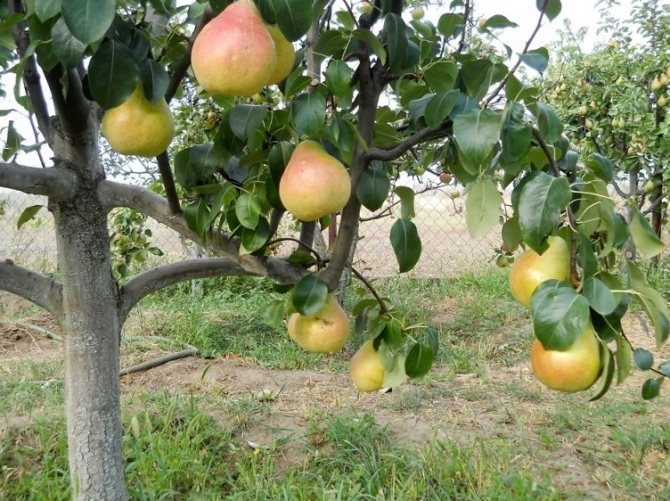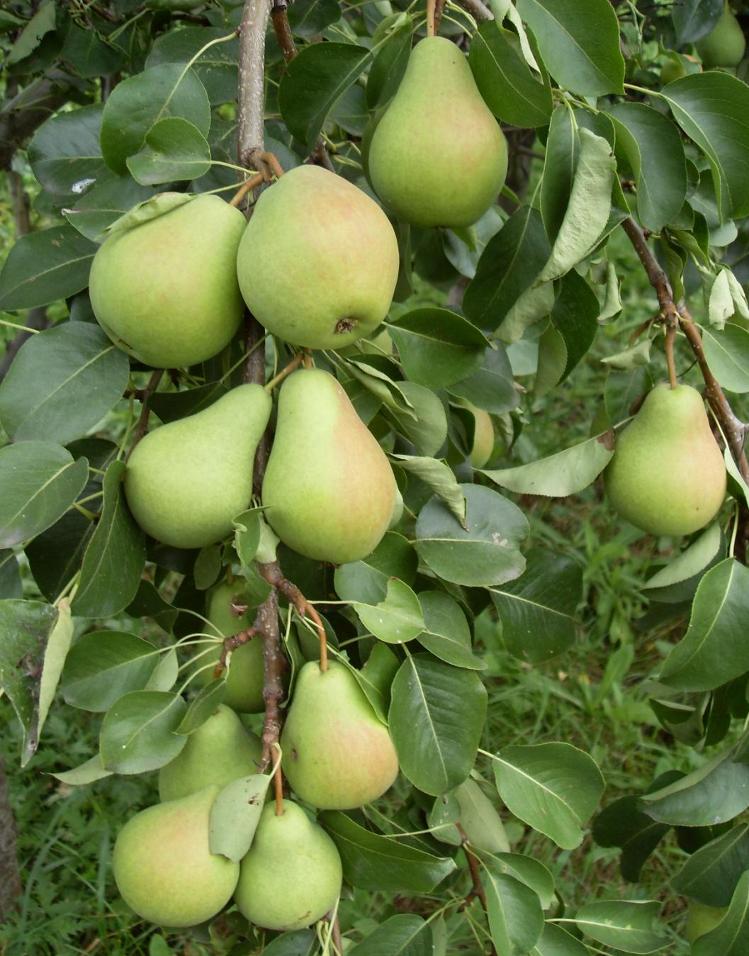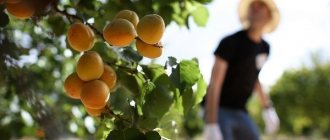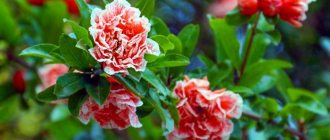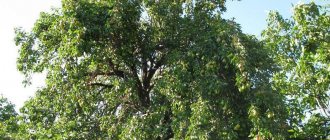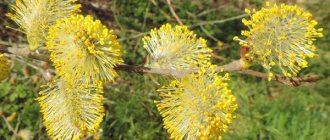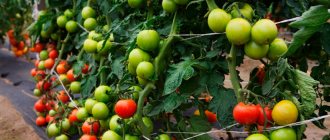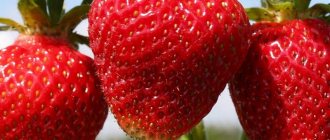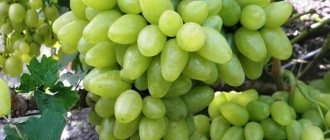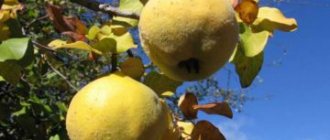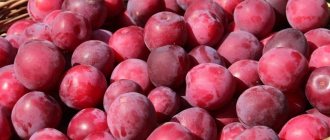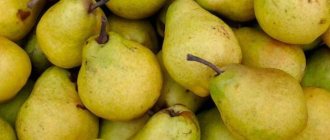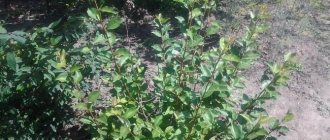Gardening »Pear
0
856
Article rating
The Forest Beauty pear was brought from Belgium. The variety has been renamed many times, so you can find such names as Forest Pear, Alexandrina, Flemish Beauty. Today it is known in all countries of Europe and even Asia.
Description of pear Forest beauty
Description of pear varieties Forest Beauty
Wood
The Forest Beauty tree can grow up to 8-10 m without pruning.
The pear grows very quickly in the first years of life, by the age of 8, growth slows down.
The crown is broad-pyramidal, the thickening is average. Shoots are thick, often arched. Leaves are dense, oblong, pointed towards the end, edges with small notches. The branches are drooping, hanging, therefore, with a plentiful harvest, you have to make supports. The Forest Beauty tree is durable.
Flowers
Flowering begins in early April; ovaries form until mid-May. The flowers of this variety are small, light pink in color. Resistant to temperature extremes, which has a beneficial effect on the yield. Because of this feature, the cultivation of the Forest Beauty is possible in the central and even northern regions of Russia.
Fruit
Fruits appear on 3-4-year-old shoots. Pears are ovoid, blunt at the end. The skin is dense, although thin, rough. During technical maturity, the color of the fruit is greenish-yellow, when fully ripe it is golden. A red blush appears on one side. The stalk is thick. The pulp of the pear is whitish or yellowish, very juicy, sweet, melting and tender. The aroma is pronounced. The average fruit weight is from 120 to 160 g.
The forest beauty became the "parent" of more than 30 varieties of pears (Marble, Dubovskaya early, Lada, Nevelichka, Dessertnaya Rossoshanskaya, etc.)
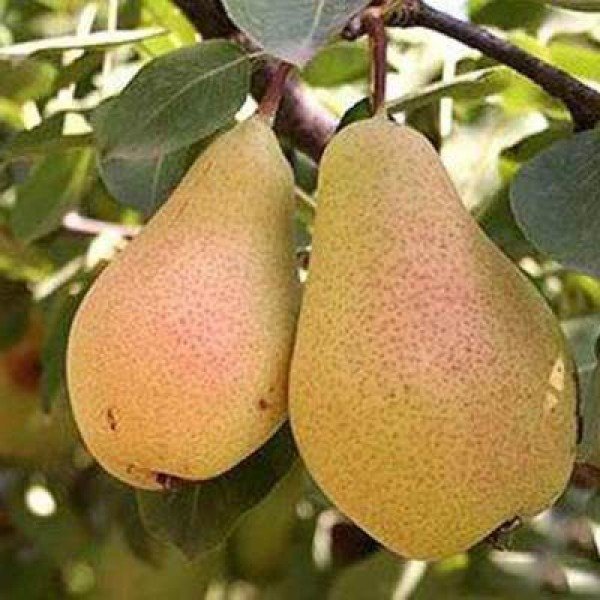
The fruits of the forest beauty are obtuse-shaped
Origin of the variety
There is a version that the variety was not bred, but was found in a forest near the city of Alost (Aalst) in Belgium. Another version of the origin - created by the specialist Fario (also in Belgium). It gained popularity thanks to another Belgian - Jean Baptiste Van Mons contributed to the widespread distribution of this pear in Europe and other continents. Initially, the variety had the name Forest Pear, then - Flemish Beauty and Forest Beauty. Under the latter, the pear has become known and popular in Russia and neighboring countries.
The forest beauty is sometimes mistakenly called Marie Louise (Marie Louise), but these are two fundamentally different varieties.
Video: about pear Forest beauty
Growing features
Plant seedlings are completely unpretentious to soil conditions. They successfully acclimatize in both wet and dry soil. The largest harvest "Forest Beauty" is able to give when planting on loose and carefully fertilized soil. The seedlings show the worst results on soil with a lot of clay. The tree will take root on it and after a while will begin to bear fruit, but in this case it is still better not to count on a large harvest.
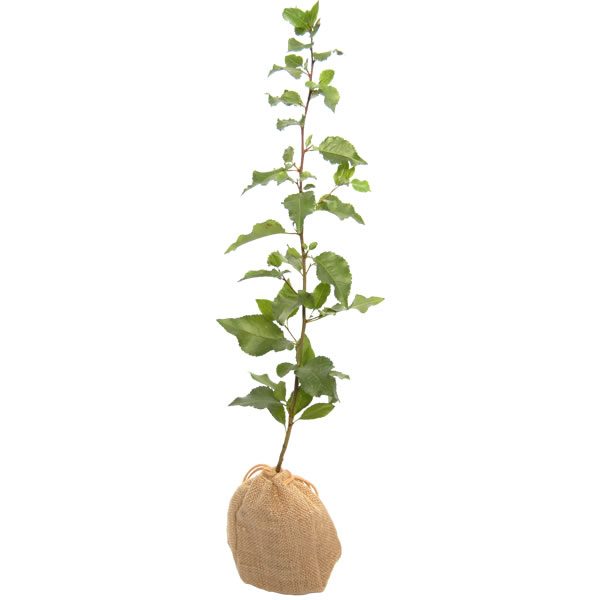

Seedling "Forest Beauty"
This variety is grafted on a wild-growing pear or quince. A tree grafted on a quince bears its first fruits in 3-4 years. The wild pear lags behind in this regard - the "Forest Beauty" grafted on it will begin to bear fruit only after 7 years.
The pear tree grows intensively in the first ten years. Branches hang down from the pyramidal crown, sometimes to the very ground. Summer residents are forced to make special supports to avoid breaking off these branches.
The variety bears fruit annually, but yields fluctuate depending on weather conditions. A pear will give the richest harvest in a cool summer, and the sweltering heat will cause a decrease in its volume.
Since the fruits are set quite late - only on three-year-old or four-year-old shoots - special care is needed to increase the yield of the tree. The gardener will have to process it with pruning shears, getting rid of excess branches.
A short story about the features of cultivation:
Table: pros and cons of the variety
| Dignity | disadvantages |
| good indicators of winter hardiness (withstands frost down to -45 ° C) | scab exposure |
| frost resistance of flowers (up to -10 ° С) | mass loss of fruits when overripe |
| good transportability | short shelf life of fruits |
| drought tolerance | |
| excellent taste indicators | |
| high yield | |
| unpretentious care |
Reviews of summer residents
- The fruits of this variety are very tasty. We have three varieties of pears growing on our site. One winter and two, which ripen at the end of summer. Fresh, the whole family loves Forest Beauty pears more. Their flesh is juicy and sweet, the skin is not rough. We eat ourselves and treat our neighbors.
- At the new summer cottage, my husband and I decided to plant several apple trees and a pear. For a very long time they could not decide on the variety, but they chose a forest beauty. The seedling was bought in a specialized store, it turned out to be good. Quickly set up and began to grow. The first couple of pears were picked in the third year. Today we are already getting a full harvest.
- I love the Forest Beauty very much. Her pears are juicy and sweet. The pulp is not firm, tender and very tasty. I practically do workpieces for the winter. So we eat fresh pears. The variety is very productive. The family is big, the children will cut them off and my husband and I still have enough left. What we don't eat, we still have enough for a box in the cellar. True, these pears are not stored for a long time, but grandchildren are happy to eat them in a couple of weeks.
Care
Watering
The forest beauty tolerates drought well, but this does not mean that it needs to be deprived of watering. A good way is the sprinkler method.
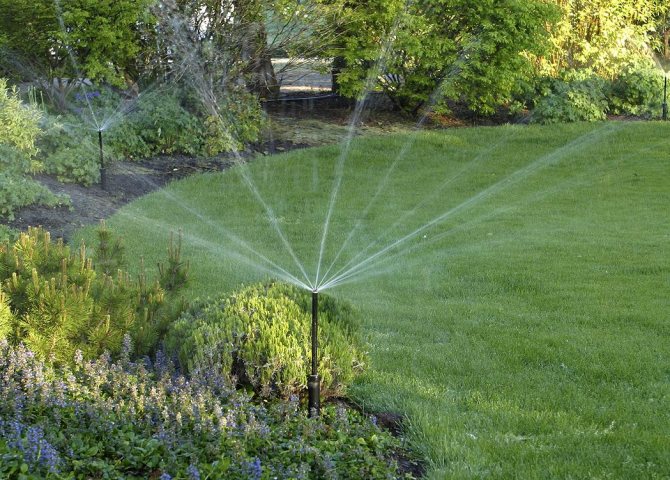

Sprinkler irrigation is a good way to water a pear
If it is not possible to organize watering in this way, then at a distance of 20-30 cm from the trunk, a furrow with a depth of 15 cm should be made, into which water should be poured (about 40 liters per 1 m2). Young trees are watered once a week, adults - 3 times a season - before flowering, during fruit setting and during their ripening. In October, water-charging irrigation is carried out - 50 or more liters of water for one tree.
Pruning
Pruning is an event that helps protect the tree from diseases and pests, increase the quality and quantity of the crop. The pear is pruned annually in early spring and autumn.
The tool must be sharp. Places of cuts are treated with copper sulfate or garden varnish.
Table: trimming scheme
| Age | Trimming scheme |
| First year after planting | Cut off the trunk at a distance of 0.5 m from the ground. |
| Second year | A skeleton is formed: leave the 4 strongest branches extending at an angle of 45 ° from the main trunk, cut off the rest. |
| Subsequent years | Skeletal branches are shortened by 1/4. The central one should be 30 cm higher. |
| In all periods, all broken, affected, dry, growing inward, too long branches are also pruned. | |
Preparing the tree for winter
Although the Forest Beauty belongs to frost-resistant varieties, in preparation for winter it is worth mulching the trunk circle. For this, sawdust, humus, peat are suitable. Young trees will benefit from additional protection - they can be wrapped in straw, sunflower leaves or paper. Such a "fur coat" will protect the trunk from frost. When snow falls, it is thrown around the trunk and trampled.But in winter, too large a snowdrift must be raked, otherwise the roots and stem may undergo damping and rotting.
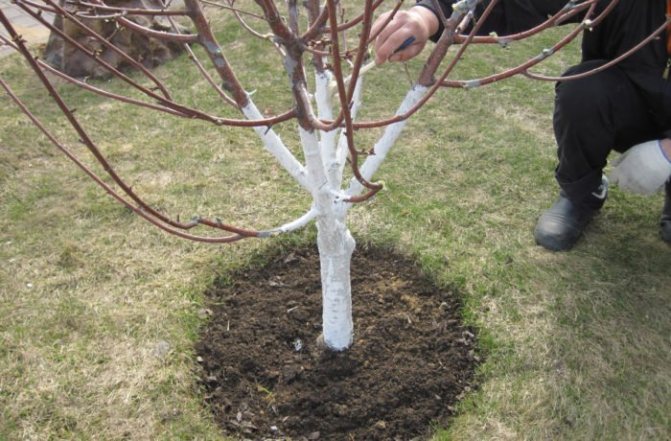

Whitewashing the tree will protect it from frost, rodents, sunburn
Before the winter frosts, the tree must be whitewashed. The solution is easy to prepare: 10 liters of water, 2 kg of lime, 1.5 kg of clay. Apply it to the trunk and main branches with a regular paint brush. Young trees can be whitewashed completely.
Top dressing
For the first 2-3 years of life, the pear will have enough nutrients in the planting pit. In the future, mineral fertilizers are applied annually, organic - once every 2-3 years in the fall (5-7 kg of humus per plant).
Table: pear fertilization scheme
| Period | Fertilizers |
| During flowering | 100 g of urea per 5 l of water (per plant). |
| After flowering | Nitroammophoska solution (1: 200). 30 l for 1 plant. |
| At the end of June - foliar feeding | Potash and phosphorus fertilizers (potassium chloride, nitroammophos - according to the instructions). |
| In autumn |
|
Calorie content of pears, composition and content of nutrients
The fruits of the pear tree are an excellent source of ballast substances: they account for about 3.3 g per 100 g. There is a lot of folic acid in the pulp. There are also other vitamins and various mineral and tannins, pectin, unsaturated fatty acids. The calorie content is 55 kcal. The data are approximate, since they are different for each variety.
Macronutrients:
- water - 83.72 g;
- carbohydrates - 15.46 g;
- fats - 0.12 g;
- proteins - 0.38 g.
Vitamins:
- beta-carotene - 15 mcg;
- E - 0.4 mg;
- B1 - 0.03 mg;
- B2 - 0.04 mg;
- B6 - 0.02 mg;
- folic acid - 15 mcg;
- C - 5 mg.
Minerals:
- potassium - 115 mg;
- sodium - 2 mg;
- calcium - 10 mg;
- magnesium - 7 mg;
- phosphorus - 10 mg;
- iron - 0.2 mg;
- zinc - 0.1 mg.
The leaves contain saponin glycosides, arbutin, tannins.
Table: how to deal with diseases and pests of the Forest Beauty
| Disease | How does it manifest | What to do |
| Scab | Black velvet spots appear on the leaves, and gray marks on the fruits. |
|
| Powdery mildew | Brown bloom, leading to wilting, yellowing and leaf fall. |
|
| Rust | "Rusty" spots with black dots on the leaves, causing the leaves to fall off. With this disease, the fruits become small. | Before flowering, treatment with 1% Bordeaux liquid. The next procedure is immediately after flowering, and another one after 2 weeks. |
| Fruit rot | Brown putrefactive spots on fruits, rendering pears unusable. |
|
| Insects | Moths, aphids, various butterflies, whose larvae feed on plant sap. | Treatment with 3% urea solution or 3% Bordeaux liquid during flowering, during ovary and ripening. The permissible frequency is 1 time in 2 weeks. |
Photo gallery: signs of pear damage
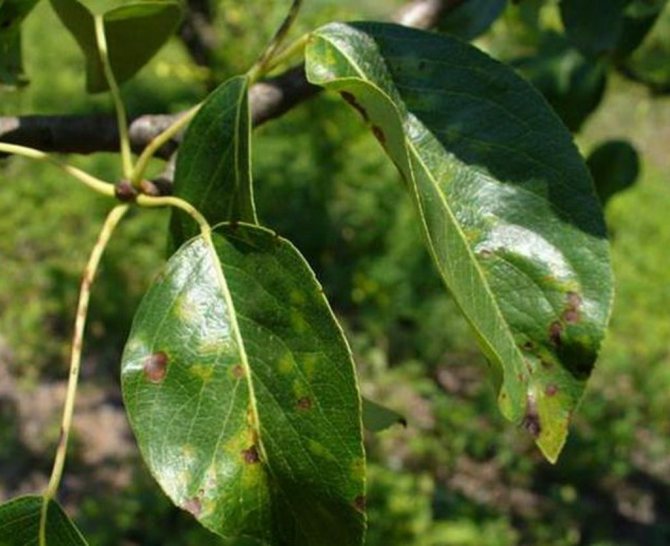

One of the disadvantages of the Forest Beauty is susceptibility to scab
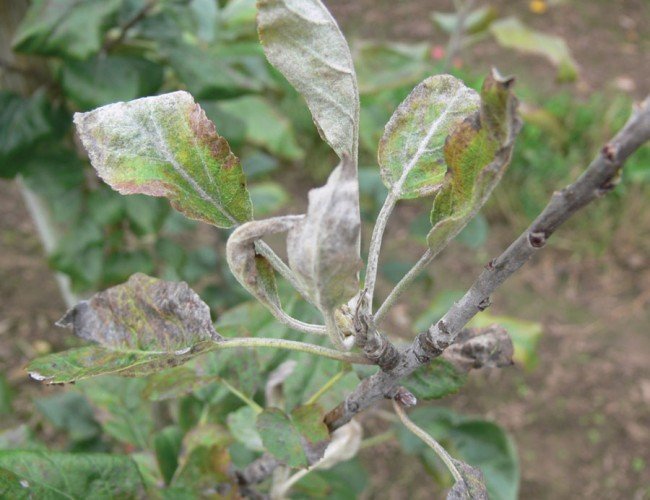

Powdery mildew leads to leaf fall and tree wasting
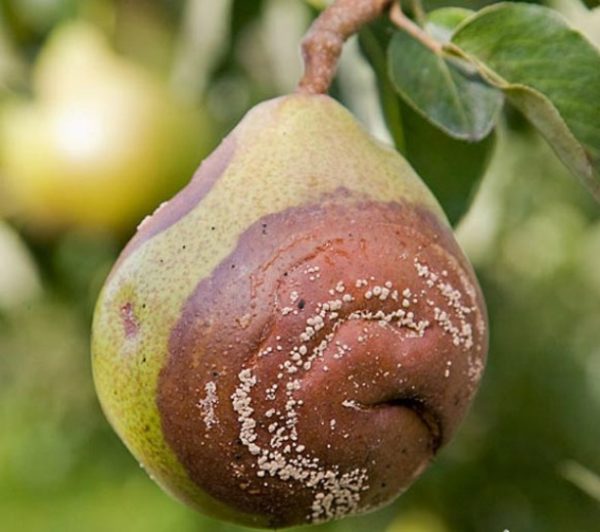

Fruit rot makes pears inedible
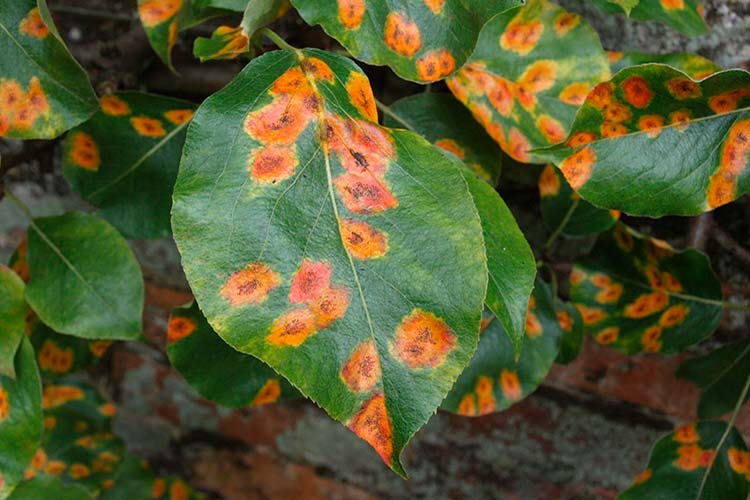

Rust is easily recognizable by bright spots
Landing
Landing of the Forest Beauty carried out in early April or early October. The place for growing a tree should be well lit. The pear of this variety requires pollinators, which are such varieties as Josephine Mechelnaya, Williams, Limonka. The Forest Beauty is partially self-fertile, so the presence of pollinators will ensure a good harvest later.Moreover, there should be a distance of about four meters between the trees.
- Ten days before planting, a hole is formed about 80 cm wide and 1 m deep. The soil, which was dug, is mixed with superphosphate, potassium sulfate and two buckets of humus. The resulting mixture is poured into a hole and a mound is made.
- A solution is poured into the pit: 2 cups of slaked lime are dissolved in 10 liters of water. Then pour over 30 liters of water.
- After 10 days, start planting a seedling. At the same time, 3 hours before planting, the roots of the seedling are kept in water for saturation with moisture.
- The seedling is placed in the hole. Carefully, avoiding damage, spread the roots at the bottom along the slopes of the mound. They are covered with earth, given that the root collar must be located 5 cm above the soil level.
- The soil is tamped and watered with 30 liters of water. The soil around the seedling (diameter 70 cm) must be mulched with peat or humus.
Harvesting
The forest beauty begins to bear fruit no earlier than 3 years of life. The average yield of an adult tree is from 120 to 170 c / ha. This pear does not break in fruiting.
The fruits ripen in the last decade of August. If you remove pears a week before full ripeness, when they are still green-yellow, then you can organize their transportation and longer storage.
It should be borne in mind that the fruits of the Forest Beauty quickly overripe and begin to crumble from the tree. Such pears can no longer be stored. They should be recycled as soon as possible.
To store the fruit, refrigerate it immediately after picking it from the tree. In a dry container and in a cool room (2-5 ° C), the pear will lie for 3-5 weeks.
This is a dessert variety, it is perfect for fresh consumption, as well as for canned products.
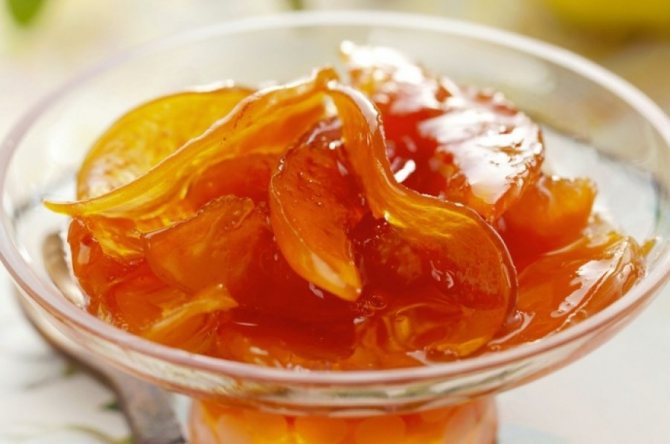

Forest Beauty pear jam will turn out sweet even without a lot of sugar
Yield
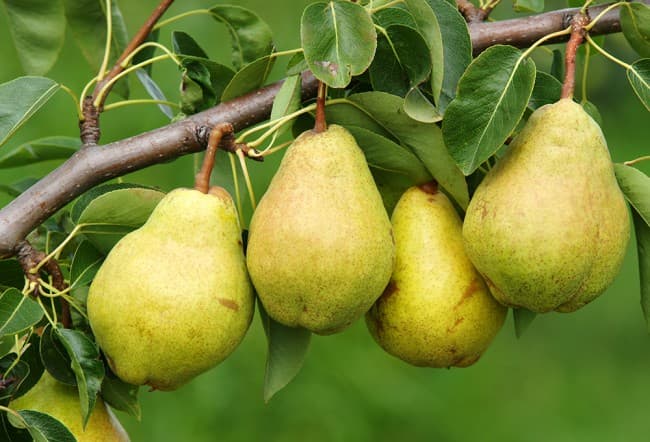

Now it's worth talking about such an important indicator for each fruit tree as yield. The forest beauty has an excellent yield, which is one of the best among all the old varieties of pears.
So, up to 130-150 kilograms of harvest can be harvested from one tree, but this indicator is relevant for trees under 18 years of age, since more mature plants every year reduce the amount of harvest by 1-2%, and trees over 30 years old altogether can reduce their yield by 50%.
As for the need for pollination of the Forest Beauty, it is partially self-fertile. This means that without pollination, it can begin to bear fruit, but the number of fruits in this case will never approach the maximum, and will be on the order of 60-65% at best.
Only through pollination can 100% of the potential of the specified variety be revealed. Pears of the following varieties are best suited as pollinators:
- Lemon;
- Williams;
- Josephine Mechelnskaya.
One of the advantages of such pollinators is that their conditions of detention are as similar as possible to those of the Forest Beauty, which means that they can be kept by neighbors in the same garden.
It is impossible not to mention the distinctive features of the Forest Beauty, which are indicated in the following points:
- The pear is excellent for growing in the harsh conditions of Russia, and does not require special care. Previously, the ancestors of this variety grew in the forest, from which its name actually appeared, and thanks to which it received such outstanding endurance.
- The pear has high winter hardiness, normally tolerates frosts down to -45 degrees, and at the same time retains high fruiting qualities.
- The scourge of this sort of pear is apple and pear scab, which mercilessly affects trees at the first opportunity. The rest of the variety is resistant to other diseases and pests, practically unaffected by tinder fungi.

